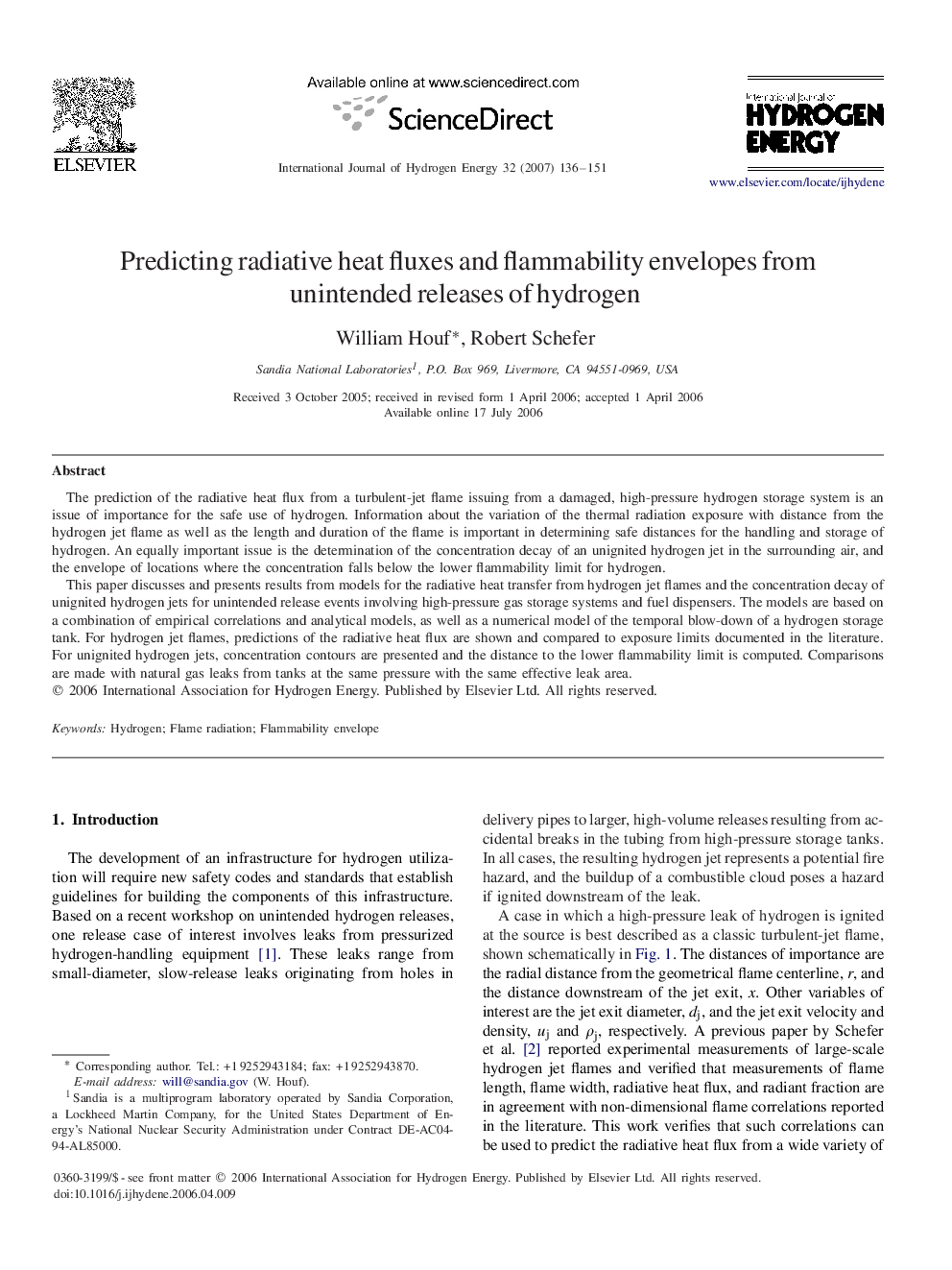| Article ID | Journal | Published Year | Pages | File Type |
|---|---|---|---|---|
| 1280801 | International Journal of Hydrogen Energy | 2007 | 16 Pages |
The prediction of the radiative heat flux from a turbulent-jet flame issuing from a damaged, high-pressure hydrogen storage system is an issue of importance for the safe use of hydrogen. Information about the variation of the thermal radiation exposure with distance from the hydrogen jet flame as well as the length and duration of the flame is important in determining safe distances for the handling and storage of hydrogen. An equally important issue is the determination of the concentration decay of an unignited hydrogen jet in the surrounding air, and the envelope of locations where the concentration falls below the lower flammability limit for hydrogen.This paper discusses and presents results from models for the radiative heat transfer from hydrogen jet flames and the concentration decay of unignited hydrogen jets for unintended release events involving high-pressure gas storage systems and fuel dispensers. The models are based on a combination of empirical correlations and analytical models, as well as a numerical model of the temporal blow-down of a hydrogen storage tank. For hydrogen jet flames, predictions of the radiative heat flux are shown and compared to exposure limits documented in the literature. For unignited hydrogen jets, concentration contours are presented and the distance to the lower flammability limit is computed. Comparisons are made with natural gas leaks from tanks at the same pressure with the same effective leak area.
